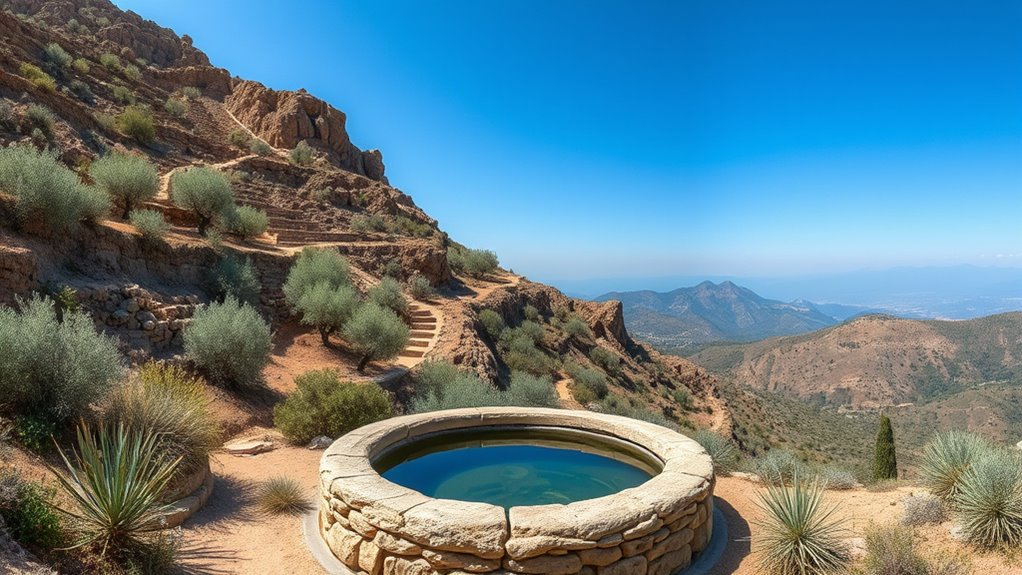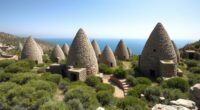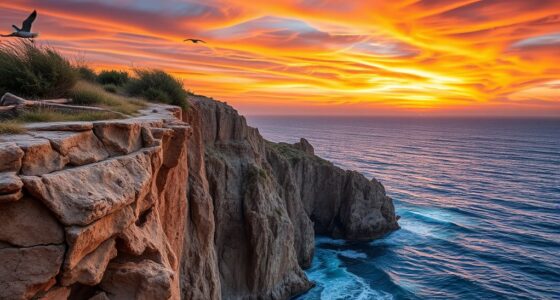In Sardinia, water conservation efforts focus on protecting wetlands, developing groundwater reservoirs, and managing competing needs among agriculture, industry, and residents. Restoration projects aim to improve biodiversity while restoring water flow. Geological mapping helps optimize reservoir placement, and new policies promote integrated management. Climate change worsens droughts, making sustainable practices essential. If you want to discover more about successful strategies shaping Sardinian water conservation, there’s still much to explore.
Key Takeaways
- Sardinian wetlands, such as S’Ena Arrubia, demonstrate conservation efforts balancing habitat protection and sustainable water use.
- Geophysical mapping and hydrogeological models optimize groundwater reservoir placement and sustainable extraction methods.
- Climate change-induced droughts and infrastructure aging highlight the importance of water-saving measures like wastewater reuse.
- Policy reforms and stakeholder engagement are essential for equitable water allocation amid competing sectors and resource scarcity.
- Advanced monitoring tools, including AI analytics, enhance wetland conservation, groundwater protection, and adaptive water management strategies.
Wetland Preservation Challenges and Opportunities in Sardinia

Sardinian wetlands face numerous challenges that threaten their ecological integrity, yet they also present significant opportunities for restoration and sustainable management. You’ll find around 2,358 wetland sites scattered across the island, many small and poorly studied. Large wetlands like S’Ena Arrubia and Corru S’Ittiri-Marceddì are protected under the Ramsar Convention, but many smaller sites lack scientific data. Past reclamation projects drained vast areas, damaging biodiversity and reducing habitats. Water pollution, land use change, and abandonment lead to vegetative degradation and species decline. Despite these issues, restoring wetlands can generate economic benefits, improve water quality, and increase resilience to extreme weather. A comprehensive assessment conducted in 2020 demonstrated that restoration interventions could generate benefits of EUR 306 million over 40 years, however, effective conservation faces hurdles like limited funding, regulatory enforcement, and knowledge gaps—areas where targeted efforts can make a real difference. Implementing restoration techniques can help recover ecological functions and support local communities.
Leveraging Geological Insights for Effective Reservoir Development
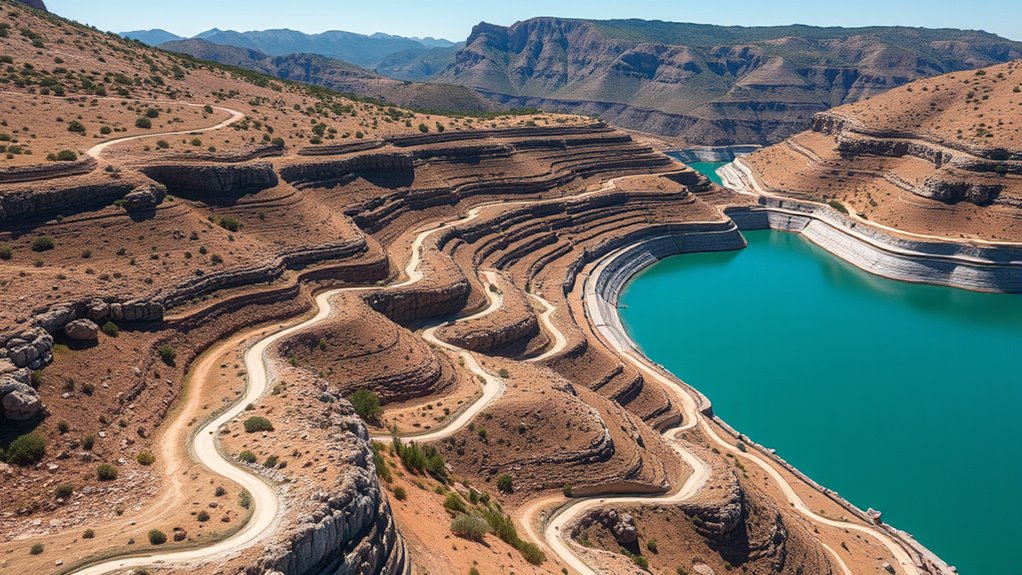
Understanding Sardinia’s complex geology is essential for developing effective reservoirs, as the island’s varied rock formations and hydrogeological structures directly influence groundwater storage and movement. By analyzing fault systems like Casteldoria and Tirso Valley, you can identify prime aquifer zones. Key factors include:
Understanding Sardinia’s geology is key to optimizing groundwater reservoirs and ensuring sustainable water management.
- Karstic limestone creates large, fractured underground reservoirs, but locating them requires precise geological mapping.
- Modern techniques such as seismic profiling and resistivity surveys help develop accurate 3D models, revealing recharge zones and flow pathways.
- Geological features like fault zones and sediment layers impact permeability and flow, guiding targeted drilling and sustainable extraction.
- The island’s karstic limestone geology not only shapes underground water reservoirs but also leads to the formation of natural springs and wells that have been vital throughout Sardinia’s history. Additionally, understanding the hydrogeological structures is crucial for predicting water movement and ensuring sustainable resource management.
Leveraging these insights allows you to optimize reservoir placement, ensure stable recharge, and minimize contamination risks, ultimately enhancing Sardinia’s water management strategies.
Addressing Climate Change Impacts on Sardinian Water Systems
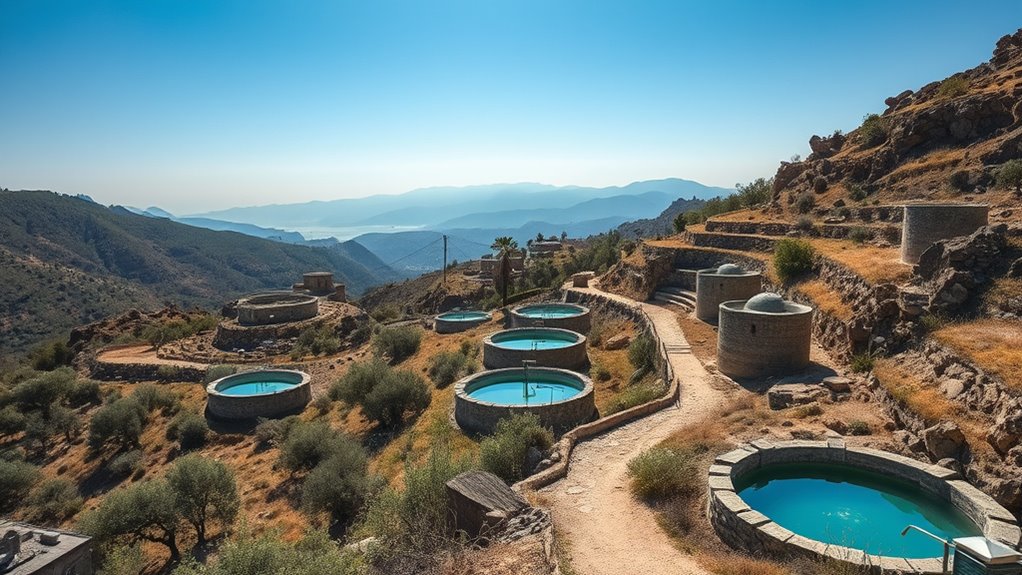
Climate change has profoundly altered Sardinia’s water landscape, intensifying droughts and disrupting traditional water management practices. Rainfall has decreased, temperatures have risen sharply, and the probability of exceptional drought conditions has increased by 50%. Since May 2024, drought alerts have been issued, leaving reservoirs critically low despite ongoing rationing. Aging, leaky infrastructure loses about 60% of transported water, worsening scarcity. Wildfires, driven by dry conditions, destroyed thousands of hectares of land and threatened ecosystems and agriculture. Communities and farmers have adopted water-saving measures, including reusing treated wastewater and sewage sludge. Investments in infrastructure upgrades are delayed due to pandemic challenges, but Sardinia recognizes that modernizing systems and expanding reuse are essential. Addressing climate impacts requires urgent, coordinated efforts to secure water for future resilience. Incorporating color accuracy and high contrast ratios into water management infrastructure can improve monitoring and reporting accuracy, supporting better decision-making in drought response strategies.
Navigating Environmental Conflicts in Water Allocation Policies
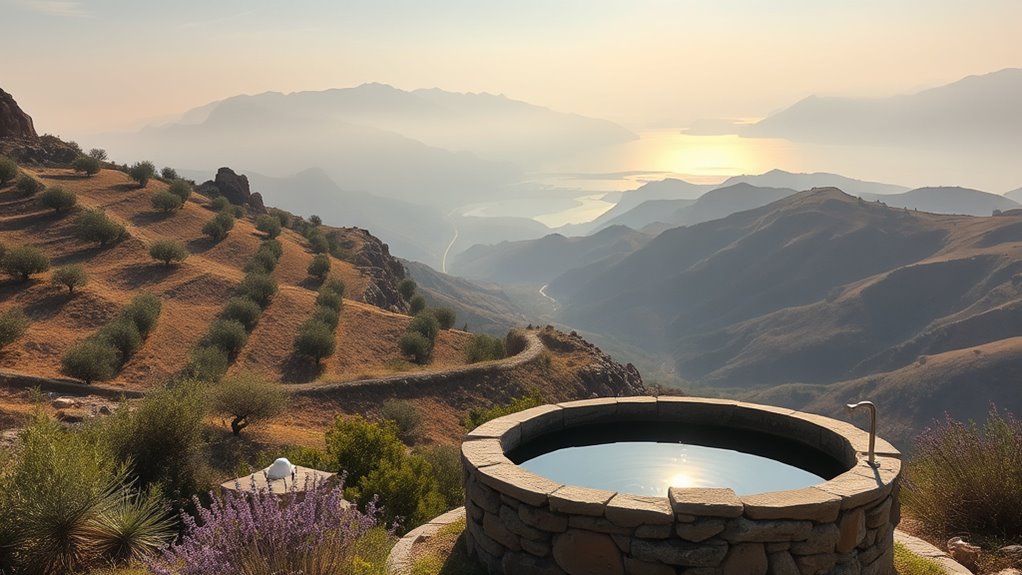
Managing environmental conflicts in water allocation policies requires balancing competing demands from agriculture, industry, and households, especially as drought conditions worsen. Sardinia’s water resources are divided among sectors, with reservoirs filled to 82% of capacity, yet conflicts persist. You need to consider:
- How multisectoral use of reservoirs demands careful management.
- The importance of stakeholder engagement to resolve disputes.
- Policy reforms, like Regional Law 29/7 and EU funding, that promote integrated management.
- Effective management of water reserves is essential to prevent resource depletion and ensure equitable distribution among users. These strategies aim to reduce fragmentation and improve resource sharing. Rising climate pressures intensify conflicts, requiring flexible, collaborative approaches. Water resource management must also adapt to changing environmental conditions to sustain supply and protect ecosystems. Balancing economic needs with environmental sustainability ensures water is allocated fairly, even under drought stress. Effective conflict resolution hinges on transparent policies and stakeholder cooperation.
Enhancing Scientific Research and Monitoring for Sustainable Water Management
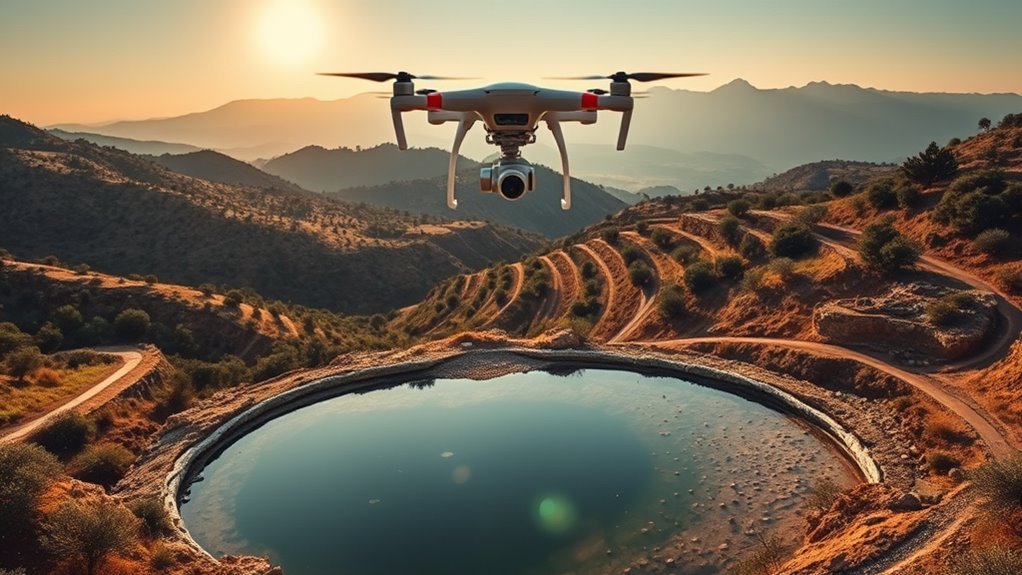
Advancing scientific research and monitoring efforts is essential for developing effective, sustainable water management strategies in Sardinia. Applying physically-based models like SINTACS and FLOWS in the Muravera Plain helps predict groundwater vulnerability by analyzing hydrological data, soil variability, rainfall, evaporation, and water table depth. These models simulate travel times of conservative elements, guiding the identification of vulnerable zones without chemical-specific data. Since 90% of Muravera’s water supply relies on groundwater, protecting it is vital. Additionally, integrating water cycle management systems addresses regional water deficits, especially in southern Sardinia. Expanding wetland research, filling ecological data gaps, and monitoring impacts like pollution and vegetation loss further support conservation efforts. Incorporating AI-driven analytics can enhance the accuracy and efficiency of water resource monitoring and decision-making. Combining scientific insights with ongoing climate monitoring enhances Sardinia’s capacity to manage water resources sustainably.
Frequently Asked Questions
How Can Local Communities Be Involved in Wetland Conservation Efforts?
You can get involved in wetland conservation by participating in community meetings and events that raise awareness about wetlands’ importance. Join local governance models like coastal contracts and collaborate with authorities, farmers, and fishermen. Support sustainable practices tied to traditional activities. Engage in protected area initiatives and share your knowledge and experiences. Your active participation helps preserve wetlands, ensuring ecosystem health and community benefits for future generations.
What Innovative Technologies Are Being Used for Water Monitoring in Sardinia?
You’re curious about Sardinia’s innovative water monitoring tech. Imagine reducing water losses by over 50%—that’s what smart meters like Intelis wSource achieve in villages like Oliena. Satellite systems track reservoirs continuously, and piezometers provide real-time groundwater data. Plus, laser-induced fluorescence detects coastal pollution swiftly. These cutting-edge tools help Sardinia manage its water resources sustainably, ensuring water stays safe and abundant for everyone across the island.
How Do Reservoir Projects Impact Local Ecosystems and Biodiversity?
Reservoir projects impact your local ecosystems by altering natural water flows, which can harm wetland and river habitats. You might notice changes in fish communities and a decline in native species due to disrupted sediment and nutrient transport. These projects can threaten biodiversity, especially in protected wetlands, and may introduce invasive species. Balancing water management with ecosystem health is essential to preserve biodiversity and maintain the ecological services you rely on.
What Policies Are Prioritized to Resolve Water Conflicts Among Sectors?
You see that resolving water conflicts among sectors is a top priority through clear policies. Sardinia’s regulations promote integrated management with a unified authority overseeing water use, ensuring fair allocation. They emphasize stakeholder participation, transparent decision-making, and conflict-resolution mechanisms. Additionally, innovative technologies like smart meters and wastewater reuse help reduce disputes by improving efficiency and fairness, making sure everyone gets access while protecting resources for future needs.
How Can Regional Cooperation Enhance Water Sustainability in Sardinia?
Regional cooperation can boost Sardinia’s water sustainability by fostering shared governance, coordination, and resource management. You can leverage partnerships, like MEDISS, to exchange knowledge, adopt innovative technologies, and strengthen policies. Engaging stakeholders through participatory models guarantees inclusive decision-making. By working together across sectors and borders, you’ll improve hydrological monitoring, develop unified strategies, and build resilience, ensuring sustainable water use for the region’s environment, economy, and communities.
Conclusion
By understanding Sardinia’s unique wetland ecosystems and leveraging geological insights, you can develop smarter water management strategies. Climate change has already reduced rainfall by 15%, impacting water availability. Addressing conflicts and strengthening research guarantees sustainable use for future generations. Embrace these opportunities to protect Sardinia’s water resources, knowing that proactive conservation efforts can secure water access for over 1.2 million residents and preserve essential habitats for years to come.
